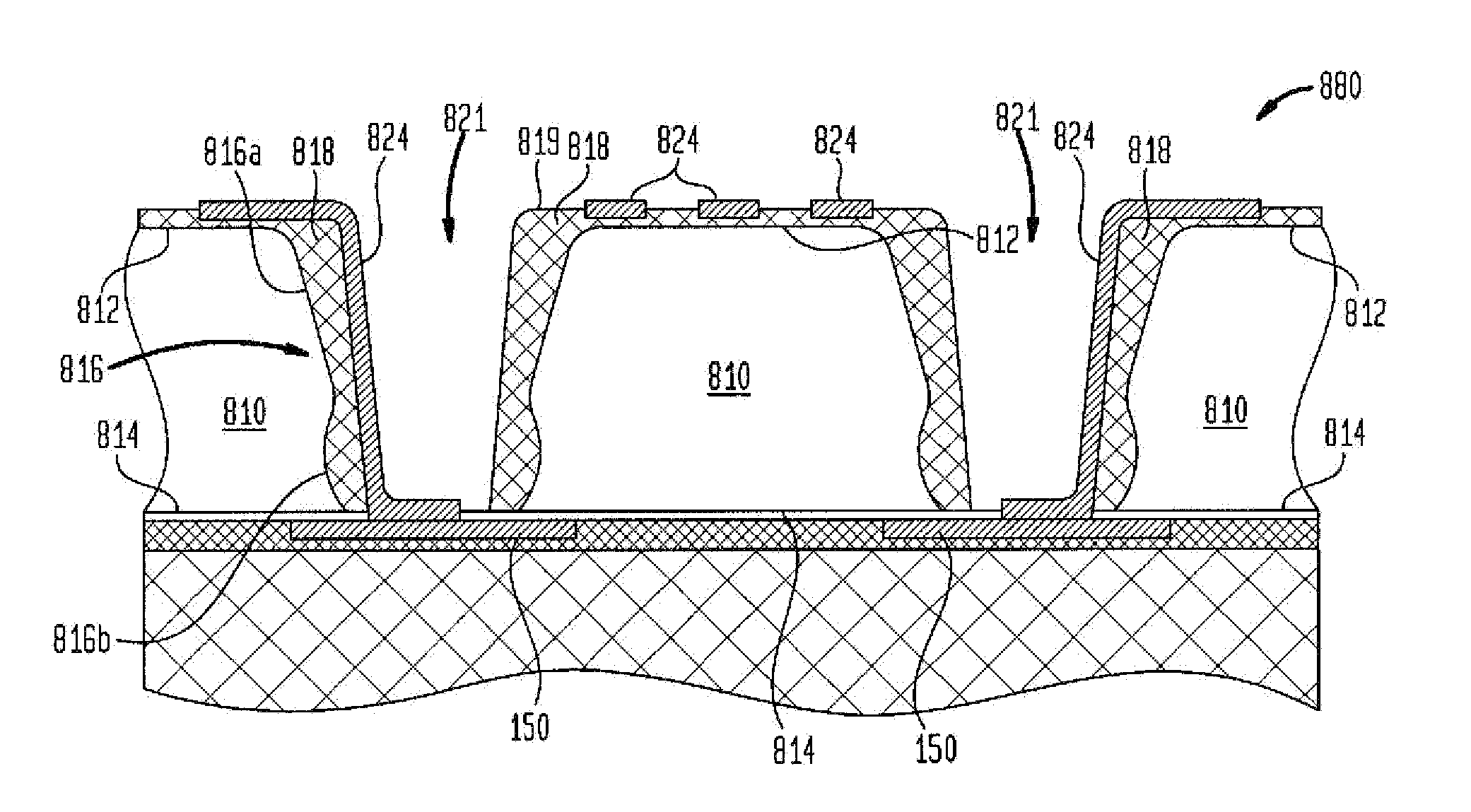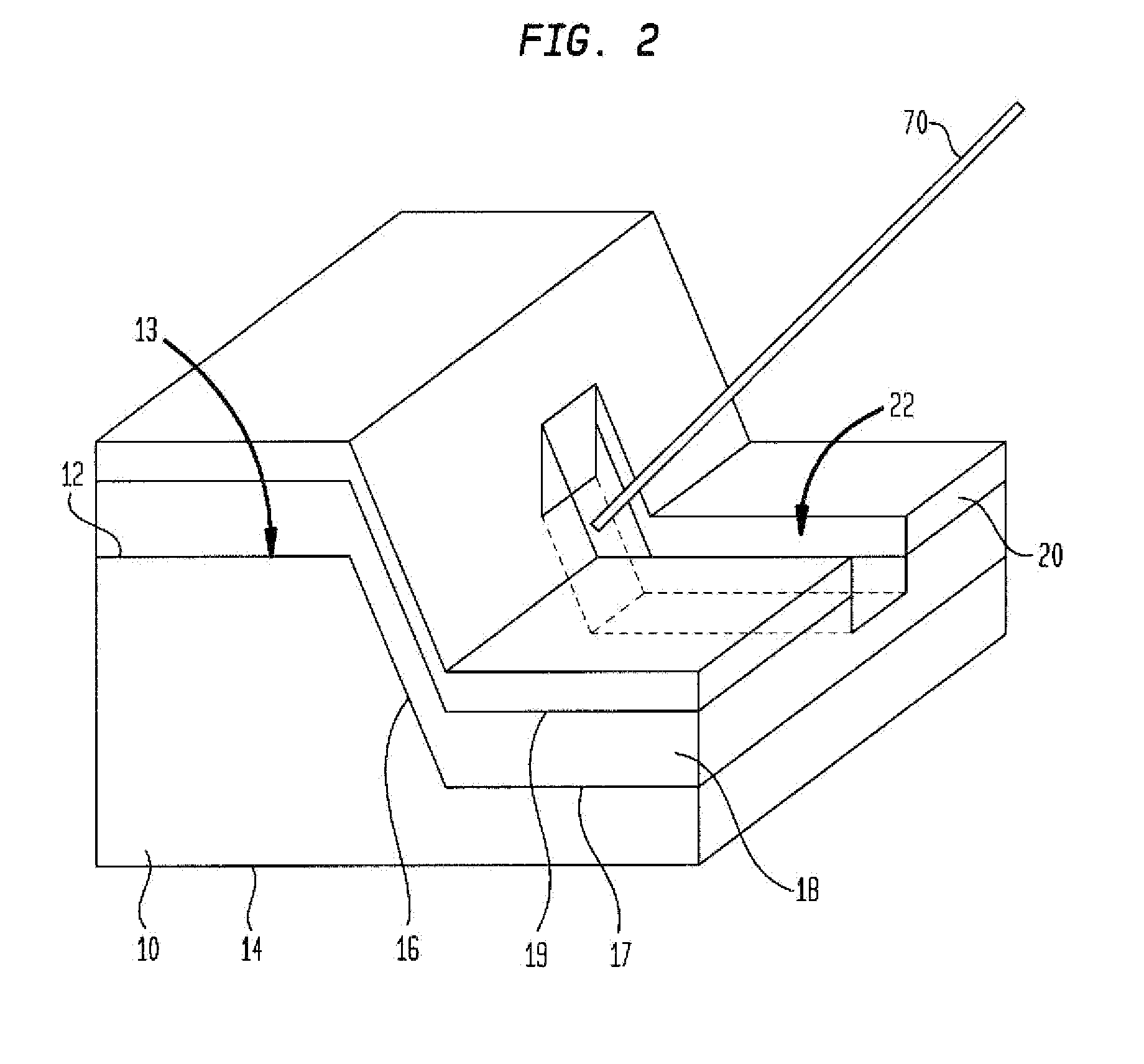Non-lithographic formation of three-dimensional conductive elements
a technology of conductive elements and non-lithographic formation, which is applied in the direction of semiconductor devices, semiconductor/solid-state device details, electrical equipment, etc., can solve the problems of cumbersome development of masks for use in photolithography, inefficient and inaccurate photolithography,
- Summary
- Abstract
- Description
- Claims
- Application Information
AI Technical Summary
Benefits of technology
Problems solved by technology
Method used
Image
Examples
first embodiment
[0042]a semiconductor element 90, shown in FIG. 6, will be herein described according to its method of construction. An assembly 80 is shown in FIG. 1 having a substrate 10 with a rear face 12 and a front face 14. The substrate typically consists essentially of a monocrystalline semiconductor material such as, for example, silicon, an alloy of silicon with another material, one or more III-V semiconductor compounds such as gallium arsenide among others, or one or more II-VI semiconductor compounds. In a particular embodiment, the substrate can be a silicon-on-insulator substrate which includes a buried oxide (“BOX”) layer that separates an active semiconductor device layer at front face 14 from a bulk semiconductor region at rear face 12. A sloped surface 16 extends from rear face 12 toward front face 14, and a trench surface 17 extends from sloped surface 16. Rear face 12, sloped surface 16, and trench surface 17 will be referred to herein collectively as lower face 13. As describe...
second embodiment
[0050]an assembly is shown in FIGS. 7 and 8. Assembly 190 includes similar components to those described above, namely a substrate 110 with a rear face 112 and a front face 114. The substrate 110 can be a semiconductor element, such as can include microelectronic devices therein, such as in a microelectronic device region 160 adjacent the front face 114. Trenches 128 are formed in substrate 110 and are each defined by a trench surface 117 and sloped surfaces 116 extending from rear face 112 toward front face 114. Trenches 128 extend through much of the thickness of substrate 110 measured between rear face 112 and front face 114, and vias 121 extend from within the trenches 128 to contacts 155 at rear face 112. As seen in FIGS. 7-8, the trenches 128 are disposed adjacent peripheral edges 176 of the substrate 110 and can extend in directions parallel thereto.
[0051]Trenches 128 can alternatively be provided in the form of holes overlying individual ones of the vias 121, or in the form ...
third embodiment
[0055]An assembly 290 is shown in FIGS. 10 and 11. Assembly 290 can include similar components to those described above, namely a substrate 210 with a rear face 212 and a front face 214. Substrate 210 further includes sloped surfaces 216 that extend from rear face 212 toward front face 214. A dielectric region 218 is provided overlying at least sloped surface 216. A conductive region overlies at least the rear face 112 and sloped surfaces 216. Vias 221 can extend from within the trenches 228 to contacts 255 at rear face 212, which in the example of FIGS. 10 and 11 are filled with conductive material. A conductive trace 224 can extend along sloped surface 216 and electrically connects a conductive pad 250 at front face 214 with a contact 255 at rear face 212. Conductive elements 224 can extend from individual ones of the vias 221 upwardly along sloped surface 216 that may be shared by several vias. Multiple conductive traces 224 may extend between pad 250 and contact 255 and may ext...
PUM
 Login to View More
Login to View More Abstract
Description
Claims
Application Information
 Login to View More
Login to View More - R&D
- Intellectual Property
- Life Sciences
- Materials
- Tech Scout
- Unparalleled Data Quality
- Higher Quality Content
- 60% Fewer Hallucinations
Browse by: Latest US Patents, China's latest patents, Technical Efficacy Thesaurus, Application Domain, Technology Topic, Popular Technical Reports.
© 2025 PatSnap. All rights reserved.Legal|Privacy policy|Modern Slavery Act Transparency Statement|Sitemap|About US| Contact US: help@patsnap.com



